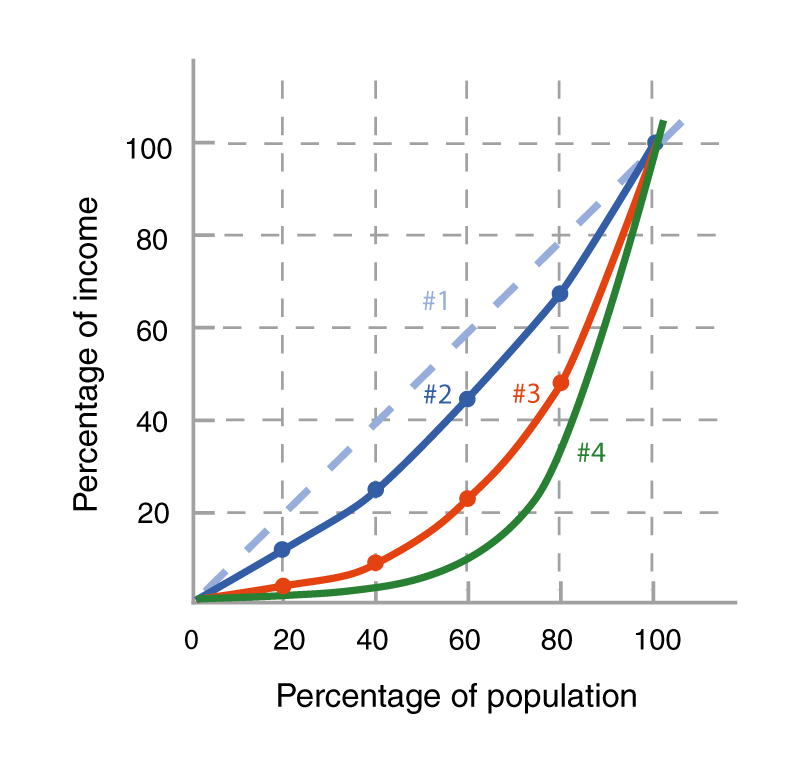Chapter 15
Screen 1 of 1
Use the two different distributions of income in the table below to answer the questions that follow.
| Quintile | A | B |
| Poorest | 10.5 | 2.5 |
| Second | 13.2 | 6.8 |
| Middle | 21.6 | 13.9 |
| Fourth | 26.4 | 24.2 |
| Richest | 28.3 | 52.6 |
| Quintile | A | Cumulative | B | Cumulative |
| Poorest | 10.5 | 2.5 | ||
| Second | 13.2 | 6.8 | ||
| Middle | 21.6 | 13.9 | ||
| Fourth | 26.4 | 24.2 | ||
| Richest | 28.3 | 52.6 |

- Chapters
- descriptions off, selected
- captions settings, opens captions settings dialog
- captions off, selected
- English Captions
This is a modal window.
Beginning of dialog window. Escape will cancel and close the window.
End of dialog window.
This is a modal window. This modal can be closed by pressing the Escape key or activating the close button.
This is a modal window.
- Chapters
- descriptions off, selected
- captions settings, opens captions settings dialog
- captions off, selected
- English Captions
This is a modal window.
Beginning of dialog window. Escape will cancel and close the window.
End of dialog window.
This is a modal window. This modal can be closed by pressing the Escape key or activating the close button.
This is a modal window.
C. Are these distributions more or less equal than that for the United States today, according to the data in the textbook?
| A. |
| B. |
| C. |
- Chapters
- descriptions off, selected
- captions settings, opens captions settings dialog
- captions off, selected
- English Captions
This is a modal window.
Beginning of dialog window. Escape will cancel and close the window.
End of dialog window.
This is a modal window. This modal can be closed by pressing the Escape key or activating the close button.
This is a modal window.